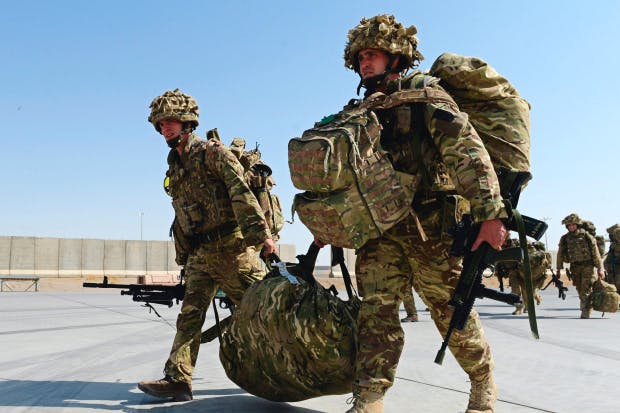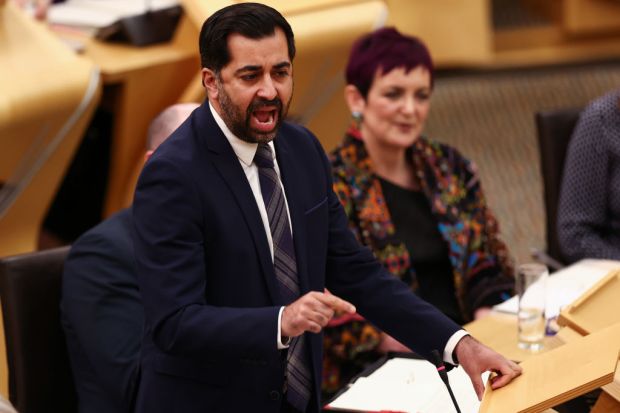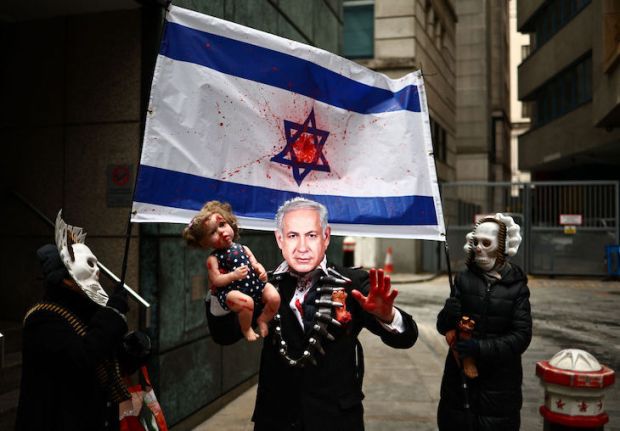The bomb attacks at Kabul airport were what US and allied commanders overseeing the mass evacuation had most feared. In so far as they could be, they were prepared. They had, it appears, received very specific intelligence — perhaps based on a trial run by the bombers — that such attacks were in the offing. They warned people to stay away from the airport. Guards were doubtless on extra-high alert. And yet the perpetrators got through. More than 60 civilians were killed along with 13 US marines. Dozens more were injured and taken to already overburdened hospitals in Kabul.
The carnage of 26 August was the costliest day in the last stages of the West’s Afghan war. As President Biden noted at his strangely stilted press conference just a few hours afterwards, Donald Trump’s agreement with the Taliban not to attack US troops during the retreat had held. This was something else: a return to the sort of terrorist attacks that had become almost routine before 9/11 and which the Nato-led intervention in Afghanistan had arguably stalled, at least from Afghan territory. The airport bombings leave a horrendous symmetry: a 20-year western engagement that began and ended with terrorist atrocities, demonstrating that so-called asymmetric warfare is not over.
For the record, the bombings claimed the greatest number of American casualties since a Chinook helicopter was shot down in 2011, with the loss of 30 American and eight Afghan lives. But this might not be the most appropriate comparison. What happened has far more in common with earlier terrorist attacks on US troops, such as the truck bombing at Khobar Towers barracks in Saudi Arabia, 25 years ago last June, when 19 Air Force personnel died and hundreds in the vicinity were injured. Western, but especially the US, military are always targets when on hostile soil. The chaotic throngs of people desperately trying to leave Afghanistan from Kabul airport made for almost ideal conditions for a suicide attack.
The official US response — from commanders on the ground and from President Biden himself in a strangely stilted, but highly emotional, press conference at the White House — seemed unusually restrained even in the face of the presidential pledge to take revenge. The evacuation, he explained, and the western military presence in Afghanistan, was very close to its end; commanders knew that the opportunities for further attacks were limited. As indeed it has turned out. The Germans and Australians have already left; the British said on Friday morning that they would be processing no more would-be evacuees and the likelihood must be that they will be gone within 24 hours — probably the last national contingent to depart before the United States, whose operation will surely be declared over before the 31 August deadline.
If further casualties can be avoided, the United States and the UK will be relieved that it was only in the very last stages of this always perilous two-week operation that the terrorists got through.
As always, conspiracy theories swirled in the wake of the attacks. A particularly far-fetched theory was that the very specific warnings, delivered in particular by the British, might suggest a false-flag operation designed to disperse the crowds at the airport to give the UK and US forces a clear run out. Marginally more plausible were claims that the bombers — identified as being from an Afghan-based branch of the jihadist Isis — had been in cahoots with the Taliban, whose guards at the airport had deliberately let them through.
This was categorically dismissed by US officials, up to and including the President, and there is no reason to doubt them. One of the more extraordinary aspects of an extraordinary couple of weeks has been the co-operation between the US and the Taliban. It has allowed the evacuation to proceed and has also entailed talks, in person, in Kabul, between Taliban leaders and Willliam Burns, the head of the CIA.
The conclusion that remains, however, is no more consoling. The speed of the Taliban’s victory across Afghanistan and its largely peaceful takeover of Kabul has left the impression that it is in control of the country — in a way that eluded the government of the now exiled Ashraf Ghani, which increasingly controlled only the cities. Yet Afghanistan could be a long way from being either under control or at peace. Resistance fighting in the Panjshir Valley has been fierce (read John Casey’s profile of the most prominent resistance fighter here) while the Taliban has at times seemed almost as shocked as anyone to find themselves suddenly in charge.
Isis may have struck ‘lucky’ with its airport bombs; the detail of the intelligence warnings suggests that the US had access to better information on this score than they had about the Taliban’s advance. But the attacks also suggest that, even if Taliban fighters have the discipline — as shown at the airport — to enforce a degree of security nationally, their control is by no means complete, even in Kabul. If this is so, Afghanistan’s old ‘ungoverned spaces’, where franchised terrorist groups once flourished, could be on their way back.
As the Taliban returned to Kabul, the soul-searching in the West began — about the achievements, or not, of the 20-year engagement and whether so many servicemen had died in vain. The one unambiguous success, it was noted, was the end of terrorism emanating from Afghan soil. The slaughter at Kabul airport now calls that into question, too. It also bodes ill for Afghanistan.
To some, evidence that the Taliban’s sway is less than complete will be welcome — it could mean that, if they are serious about governing, they will have to proceed in a more moderate way. But their weakness could also open new possibilities for Isis and others. And then Afghanistan will face more turmoil, perhaps a new civil war, and the prospect that the ‘foreign infidel’ will be back, if only as a force that fires from the relative safety of the air.
Got something to add? Join the discussion and comment below.
Get 10 issues for just $10
Subscribe to The Spectator Australia today for the next 10 magazine issues, plus full online access, for just $10.




















Comments
Don't miss out
Join the conversation with other Spectator Australia readers. Subscribe to leave a comment.
SUBSCRIBEAlready a subscriber? Log in